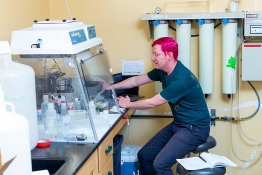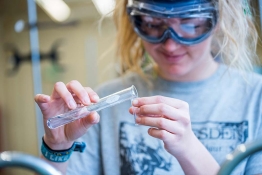Nanobiology
Jenny Cappuccio
Dr. Cappuccio is interested in how membrane and surface proteins interface on the nanoscale. The research encompasses the biochemical and biotechnology aspects of these two classes of proteins, focusing on understanding their interactions with lipids and other proteins. Student use nanotechnology tools to enable studies of GPCRs such as the CB2 receptor and other membrane proteins in lipid nanodiscs. New areas of research include investigations of novel cellulases in partership with CSUPERB and the Joint Genome Institute and applications of membrane proteins in stem cell biology.
Jorge Monteiro
Luminescence is used in cell imaging to unravel cellular processes, or in disease diagnosis. Some systems can be modified to add extra functionality, such as generating reactive oxygen species that are cytotoxic and can be used for treatment. Commonly used luminescent compounds such as organic dyes and nanoparticles have limitations from photobleaching, short emission lifetimes, excitation/emission bands outside of the biological window and cell damage due to high power excitation sources.










